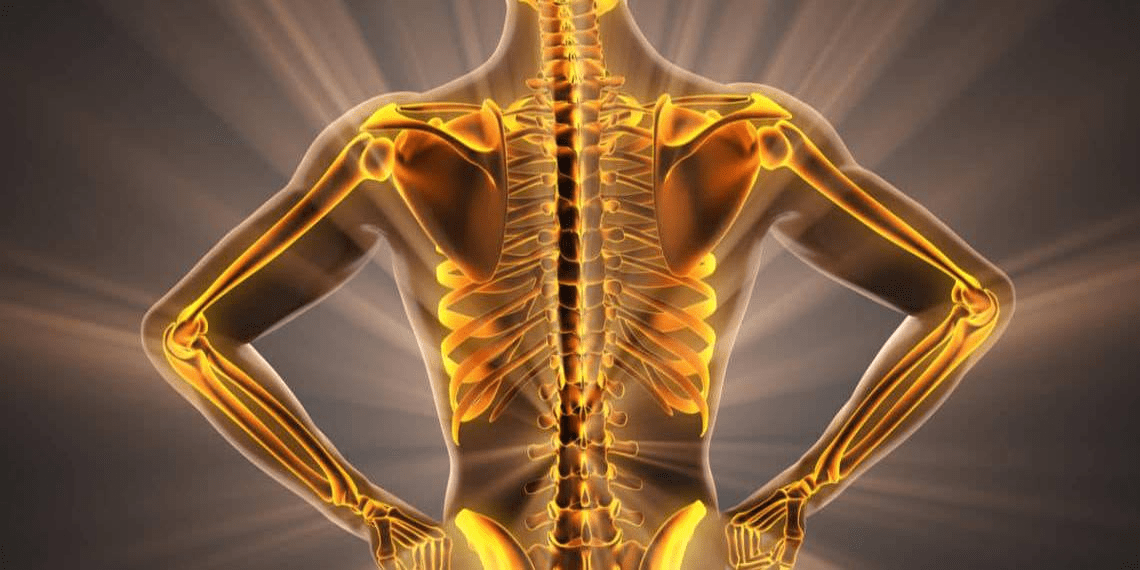
Reviewed and Updated: April 8th, 2025
6 min read
Bone health not only determines the strength of your bodies’ literal framework but also has a massive impact on your quality of life.
The calcium that keeps your bones healthy is also needed for every function in your body. So your goal, at any age, is to achieve and maintain peak bone mass. But what is it, and how do we get it?
Related: Bone Strengthening Exercises: Everything You Need to Know
The Importance of Strong Bones
Strong bones are essential to your body in more ways than posture. Strong bones provide stability, strength, and support for your body, as well as making you look and feel younger. Your bones provide support for your muscles and protect your internal organs. They help you to move, dance, run, and enjoy all kinds of physical activities.
Strong bones protect you from diseases like osteoporosis. This is potentially a severe disease as it causes bones to become so thin and weak that fractures can easily happen. Osteoporosis affects men and women alike, with most injuries occurring in the hips, spine, and wrists. Sadly, men have a higher fatality rate with hip injuries due to osteoporosis. Hip fractures in men lead to a 31% mortality rate one year after the fracture, compared to a 17% in women. The risk factors associated with it are osteopenia, history of prostate cancer, long-term use of glucocorticoids, and older age at the time of fracture. Additionally, more than half of male survivors of hip fractures experience chronic pain and need help with mobility afterwards.
Strong bones also play a huge role in athletic performance. In addition to how you’re able to run, walk, or jump, regular exercise fortifies your bones. There is a reciprocal relationship between exercise and bone strength. Up to age 30 or so, are your bone-building years. This is the time of your life when you can build bone density - an investment that will pay off for the rest of your life.
What is Peak Bone Mass?
Peak bone mass is the maximum bone density, size, and strength you can achieve over your lifetime.
As mentioned earlier, the best time to increase bone density is before age 30 - childhood, adolescence, and young adulthood, because by age 40, it begins to gradually decrease. This doesn’t mean that decrease can’t happen before 40 though - poor nutrition, smoking, inactivity, or excessive alcohol consumption can hinder density building. Many factors contribute to peak bone mass, and even as you age, you can do things to slow bone mass decline.
Contributing Factors to Peak Bone Mass
Many factors contribute to your peak bone mass, but here are some of the main ones:
If you think of bones as a savings account and bone tissue as its balance to be deposited or withdrawn, people should invest as much as possible in their youth. Unfortunately, medical and family history may hinder this.
Up to 90% of bone mass is acquired by age 20, but the following conditions can reduce peak bone mass or simply harm bone density overall:
- Childhood diseases like kidney, liver, rheumatic, neoplastic, and neuromuscular diseases.
- Eating disorders such as anorexia nervosa which is linked to low bone mineral density (BMD) and the increased risk of bone fractures and decreased bone growth in adolescence.
- GI disorders such as inflammatory bowel disease and celiac disease often involve malabsorption of essential nutrients for bone health, such as calcium and vitamin D. When combined with smoking, a sedentary lifestyle, and a family history of osteoporosis; it all creates significant risk factors for fractures in older age.
- Endocrine and seizures can contribute to osteopenia and osteoporosis from an imbalance of certain hormones (or endocrine disorders) in the body. Similarly, individuals with epilepsy who are treated with antiepileptic drugs (AEDs) may have a higher risk of bone diseases and fractures.
Additionally, heredity accounts for 65% of your bone health.
[Related: Dietary Dangers: Foods to Avoid for Osteoporosis]
Behavioral Factors
Lifestyle choices, as mentioned earlier, can have an impact on the strength of your bones. For instance, regular exercise and a healthy diet rich in calcium and vitamin D will enable you to ‘deposit’ plenty in your bone tissue account.
Conversely, less-ideal lifestyle choices like smoking, excessive drinking, having a nutrient-deficient diet, and inactivity have all been linked to poor bone density.
Gender
Men have higher bone density than women, although, before puberty, they’re roughly equal. After puberty, men soar ahead in the bone mass race. This raises the question of how gender transitioning and hormone therapy might affect bone density, but the National Institute of Health didn’t find substantial differences.
Exercise
The conversation around bone health revolves heavily around calcium so people might be surprised about the bone building benefits of regular exercise. According to the National Osteoporosis Foundation (NOF), weight-bearing, high-impact exercises, like stair climbing, dancing, running, or jumping rope, are excellent ways to strengthen your bones.
If you are already dealing with osteoporosis or a prior bone injury, you can try low-impact, weight-bearing exercises, like low-impact aerobics or walking. Other weight-bearing exercises include resistance training, like weight lifting, weight machines, or functional bodyweight exercises.
Maximizing peak bone mass via exercise is extremely important to keep in mind as it’s one of the factors we have the most control over. Additionally, exercise provides cardiovascularI health benefits so find an activity you enjoy and get started today!
Ethnicity
While men have higher bone density than women, black women tend to have greater bone density than white women, even in childhood and adolescence. The reasons for this are still unclear.
Hormones
Hormones play an especially significant role in bone density for women. Women who use oral contraceptives containing estrogen have higher bone density than women who don’t. Conversely, women whose menstrual cycles end because of low body weight or excessive exercise lose bone density which does not rebound later.
Nutrition
A diet rich in calcium and vitamin D will go a long way in assuring your bone strength. Calcium deficiencies in your youth can cause fracture risk to be more significant as you age. About 1,300 mg of calcium is needed between 10 years old and 20 years old. This might seem like a lot, but you can achieve this with:
- Two tall glasses of milk
- One cup of orange juice with added calcium
- One cup of yogurt
If you don’t eat dairy products, fish, green leafy vegetables, and tofu also contain calcium. In addition, many foods are fortified with calcium such as certain braids of orange juice, almond milk, and more.
Vitamin D is often paired with calcium to increase its absorption. Carbonated beverages, like soda, reduce your ability to absorb calcium and cause depletion of mass in the bones.
After age 40, calcium intake should be about 1,000 mg with 1,000 IU of vitamin D per day. After age 50, men may continue with 1,000 mg of calcium, but menopausal women (and post-menopausal) should increase their intake to 1,200 mg each day. By age 70, both men and women should be getting 1,200 mg of calcium per day with 800 IU of vitamin D.
[Related: 16 Ways to Build and Maintain Healthy Bones]
Prevention in Childhood
When it comes to promoting bone health and wanting maximum bone density, size, and strength, it starts during your childhood and young adulthood years. This time is when your bone mass will continue to grow until it reaches its peak bone mass. Those with a higher peak bone mass reduce their risk of any bone diseases such as osteoporosis.
Tips to help your child or teen build and protect their bones:
- Make sure they are eating a balanced diet with calcium-rich or fortified foods
- Getting optimal physical activity
- Making healthy lifestyle choices - Avoid smoking and underage alcohol consumption
- Getting the right amount of vitamin D from sun exposure, fortified foods
- Using protective gear such as helmets and knee pads during sports activities
- Asking your physician about bone development during annual checkups
Bottom Line
Having strong bones is essential for a healthy and fulfilling life. You can build healthy bones from childhood with a calcium-rich diet and plenty of activity. Those early investments in your health will pay big dividends later in life. But if you didn’t make good choices earlier in life, it’s not too late to fortify your bones with calcium supplements. Consider your age and lifestyle, and supplement accordingly.
Even the best diets can have gaps and calcium alone isn't enough. We've developed Bone Essense to be a complete formula with the building blocks of our Bones and Joints. Shop today.
This article is provided for informational purposes only and is not intended to be used as medical advice. If you have immediate concerns about your health, please seek the help of a medical professional.
© 2021 Best in Nature All rights reserved




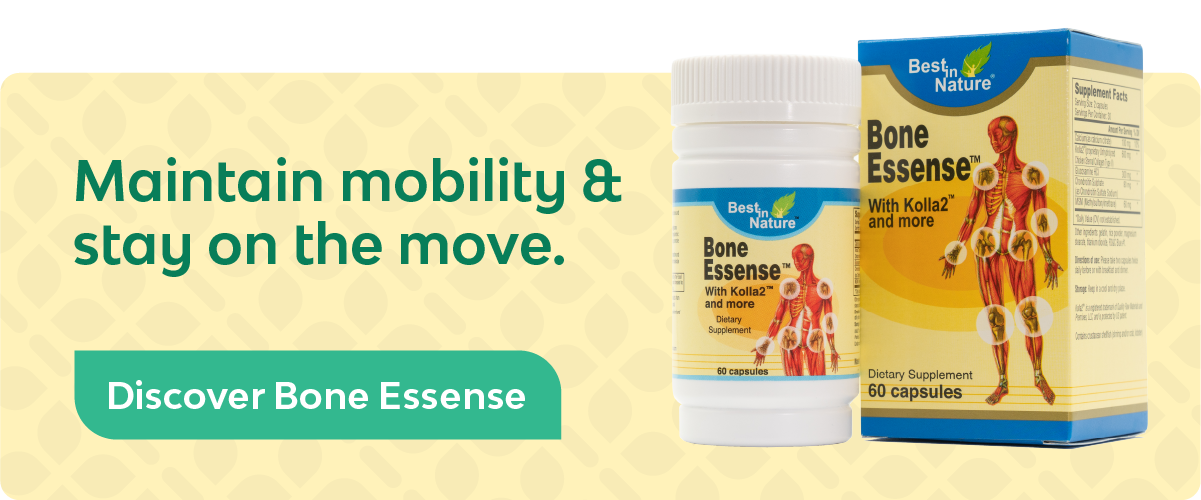


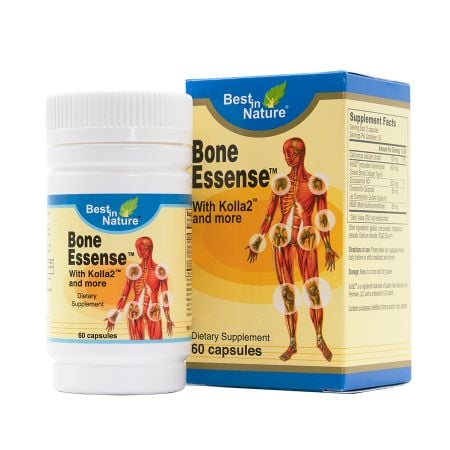
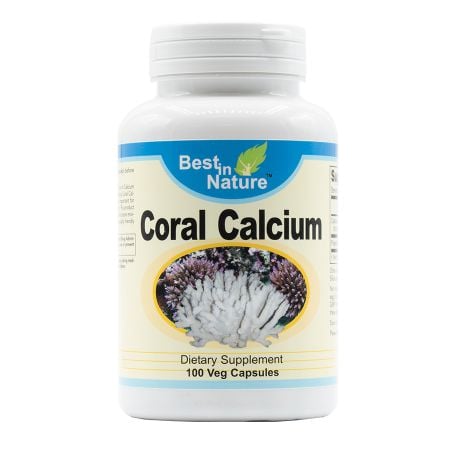
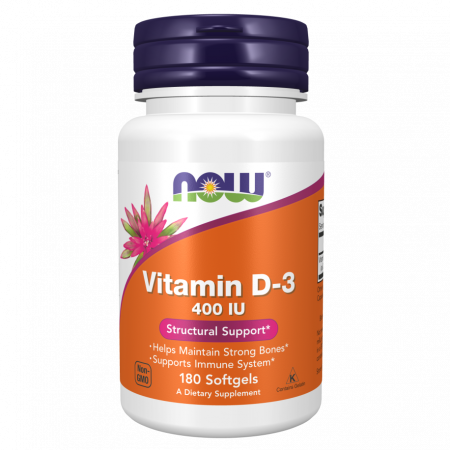
Validate your login
Sign In
Create New Account